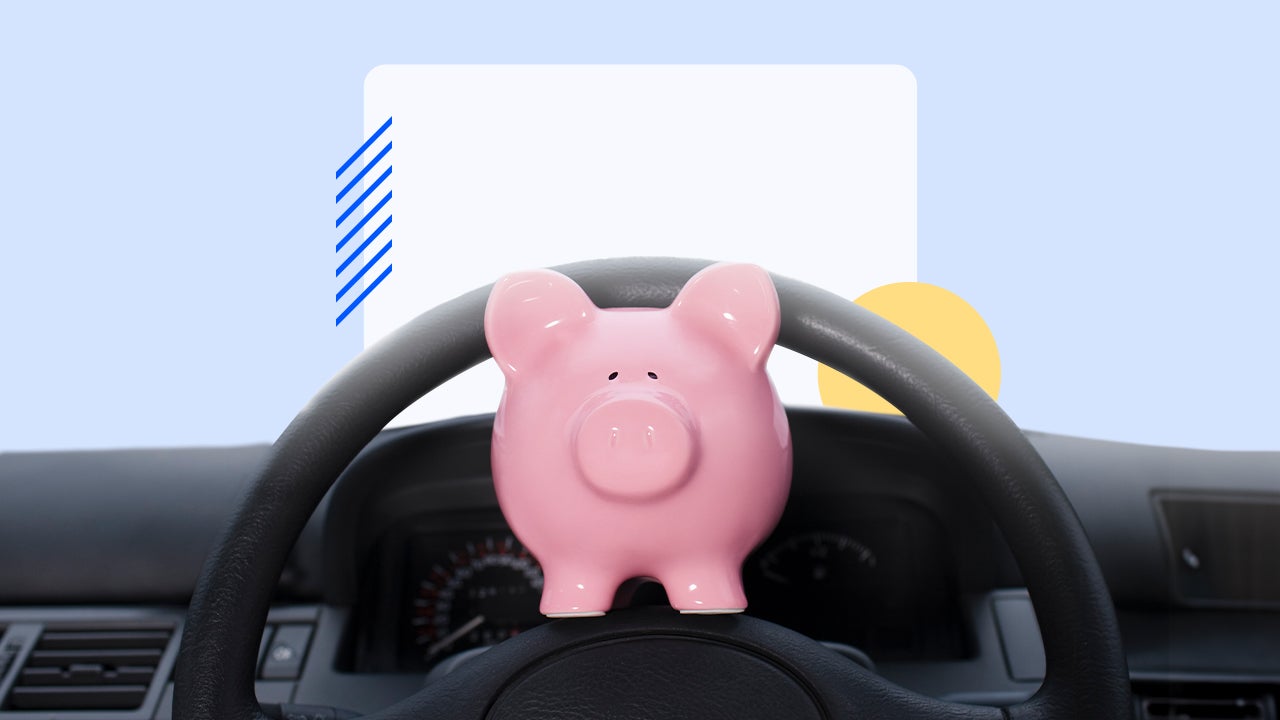How to save money: 14 easy tips

Key takeaways
- Establish specific financial goals with clear timelines to learn how to save effectively.
- One of the best tips for saving money is to set up automatic transfers to your savings account. This will allow you to consistently build your savings without extra effort.
- Cash-back apps help reduce the overall cost of purchases by providing consumers with cash back or rewards on everyday purchases like groceries, gas, dining and online shopping.
- Lowering utility costs, comparison shopping for insurance and opting for generic brands can save you hundreds of dollars annually.
- Taking advantage of high-yield savings accounts and employer-matching retirement contributions are simple ways to grow your money.
Figuring out how to save money can feel overwhelming, especially if your income barely keeps up with your expenses. A Bankrate survey reveals that more than one in three workers (34 percent) report living paycheck to paycheck with little to no money left for savings after paying their monthly expenses.
Not having enough money in savings can lead to increased stress during emergencies, reliance on credit cards for unexpected bills and difficulty achieving long-term financial goals such as home ownership or retirement. Most financial experts recommend having at least three months of expenses saved to weather a financial setback like a job loss or major medical debt.
While saving this amount of money is challenging, it’s not impossible. We’ve put together our 14 best tips on saving money to help you spend less and grow your bank account.
1. Review your spending habits
Before you can determine how to save money, you first need to figure out how to spend less. Many bank statements or online dashboards include categorized spending reports. These can show you where your money is going so you can identify opportunities to reduce costs. If you’re married or live with your partner, sharing this review process can help you cut expenses and increase savings.
2. Automate your savings
Setting up automatic transfers from your checking to your savings account each payday is a surefire way to build up your nest egg. To devote money to your savings, set up a budget to ensure you’ve accounted for all your expenses.
Having a budget helps you plan your spending and savings by looking closely at how much money is coming in and going out each month. Budgeting and money-saving apps can track your spending, issue overspending alerts and automate your savings.
If you’re new to budgeting, there are a few things you should keep in mind.
“First, understand where you are today,” says Melissa Almuttar, MBA and director of engagement and servicing at H&R Block. “Tracking your income and spending, then categorizing into wants and needs gives you a baseline. Layering in your goals — like saving, recurring expenses or paying down debt — lets you see what you want to adjust. There are frameworks like using a 50/30/20 split between needs/wants/savings or the pay-yourself-first method which prioritizes savings. Choosing a method starts with your circumstances and goals, but most importantly, make sure you can stick to it and build consistency.”
3. Use cash-back apps
Cash back apps like Rakuten, Ibotta, Upside and Dosh work for more than just saving money; they also help you earn rewards and rebates on various purchases. You could earn cash back from online shopping, groceries, travel, dining and gas purchases.
These apps allow you to earn a percentage of cash back from purchases you make using the app. You’ll typically receive from one to 10 percent of the purchase price.
Depending on the app, there might be several ways you could earn cash back. For example, you could earn cash back by shopping on a specific website, uploading receipts from your purchases or scanning a store’s product barcodes.
You’ll accumulate rewards in your account, which you can redeem once you reach a minimum threshold. You may receive your cash via PayPal, gift cards or direct deposit.
4. Reconsider your mobile provider
When was the last time you took a close look at your cell phone plan? Increased service providers have led to more competition and often lower prices.
Companies such as Mint Mobile, Ting Mobile and Visible may offer comparable plans to those from the biggest mobile companies — but with lower monthly price tags. Research and compare prices to get the best deal for your mobile service needs. If you spend most of your time at home, connecting to your Wi-Fi network can eliminate the need for an expensive supersized data plan.
5. Turn off notifications that tempt you to spend money
Your smartphone can be a powerful tool in helping you save money, but it can also be a big source of temptation to spend. Promotional emails and app notifications — including those announcing big deals — can persuade you to buy a product you might otherwise have skipped. Consider unsubscribing from those lists and disabling notifications.
6. Shrink your utility bills — or avoid letting them grow
You can take some simple steps to save on your home utility bills. For instance, according to the U.S. Department of Energy, the average household can save around $225 each year by switching to LED lighting.
You can also save money on heating and cooling by sealing leaks around doors, windows and air ducts. You could also install a smart thermostat and upgrade your home’s insulation. You may be able to reduce water bills by installing smart or low-flow shower heads, fixing all water leaks (even small drips) and watering your lawn before sunrise.
You may even qualify for energy cost assistance through the federal government’s Low Income Home Energy Assistance Program (LIHEAP). LIHEAP may help pay your home energy bills, weatherize your house and do minor energy-related home repairs.
7. Evaluate your entertainment expenses
Rather than paying a high price for 400 cable TV channels, consider a more affordable streaming service such as Sling, Hulu or Fubo. Amazon Prime members can also access the company’s expansive library of shows and movies.
An Amazon Prime membership also comes with the ability to listen to millions of songs and create playlists — which can save you the money of paying for a separate streaming music service like Spotify or Apple Music.
Local libraries also rent out movies, music and audiobooks. Try the Libby app to make it even easier to add your library rentals to your phone.
8. Take advantage of free local attractions
A little research can help you find fun, affordable attractions and activities in your local area. For instance, some museums and art galleries offer free admission on certain days of the week or month. Libraries may offer passes to zoos or museums on a first-come, first-served basis. Or you can just head outdoors for a hike, bike ride or picnic.
Your bank may even offer free access to attractions. For example, Bank of America’s Museums on Us program gives the bank’s debit and credit card holders complimentary access to more than 225 cultural institutions across the country.
9. Be a strategic grocery shopper
While you’ll need to keep buying food despite higher prices, you can learn how to save money on groceries. One method is to avoid throwing away unused food. Households in the U.S. waste a total of $473 billion in food each year, which comes out to 38 percent of all food in America, according to nonprofit organization Feeding America.
As you make your grocery list, think about what you threw away last time and how to avoid letting that happen again. The study found that those who made a shopping list before going to the store typically threw away less food, so take extra time to plan out your upcoming meals. Also, take a tour of your pantry first and build your meals around what you already bought.
10. Break up with brand names
Speaking of groceries, consider whether you really need to pay for expensive brand-name foods. A comparison of ingredients and labels on things like noodles, cereal and spices may show generic alternatives to be just as nutritious and high-quality as their top-shelf counterparts.
The same concept can apply to non-food items such as paper products, hand soap and laundry detergent. Try to find more affordable alternatives for any such brand-name household items you buy. You can always switch back to your original choice if you’re not happy with the lower-priced alternative.
11. Explore other banking options
If you’re paying service fees for your checking or savings account, you may be able to eliminate those costs. For instance, online-only institutions like Ally Bank and Discover do not charge monthly service fees. Many other bank accounts charge monthly fees, but you can often avoid them by maintaining a minimum balance or receiving your paycheck via direct deposit. If your bank doesn’t let you waive the monthly fee, consider switching to a bank that does.
Additionally, online banks often pay some of the highest interest rates on high-yield savings accounts, money market accounts and certificates of deposit (CDs).
12. Compare car insurance rates
If you have a track record of safe driving, it can pay to shop around for a good insurance provider that will reward you for your responsible behavior. Compare other car insurance quotes with what you currently pay to see how much you can lower your premiums for the same amount of coverage.
Those who don’t spend much time behind the wheel may be able to cut costs by going with usage-based insurance, which can tailor your coverage to fit how much you actually use your vehicle.
13. Use coupons and promotional codes
Couponing might sound old-school, but finding deals doesn’t always require clipping portions of the Sunday newspaper. When you’re shopping online, take a few minutes to search for a coupon code when websites offer a “promo code” box on the checkout page.
Browser extensions like PayPal Honey and Coupert automatically search for online coupons while you shop. Capital One Shopping is another tool that can find online deals automatically, and it’s available to everyone — not just Capital One customers. It works by searching for coupon codes, best prices and rewards at more than 30,000 online retailers.
14. Challenge yourself to a spending freeze
Try taking control of your finances by embarking on a spending freeze during which you cut all unnecessary spending for a set period. This could give you a sense of how much you’re spending on nonessentials like trips to the coffee shop. Add the extra money you have at the end of the month to your savings or use it to pay down debt.
The bottom line
If you’re serious about reaching your financial goals, our 14 tips on saving money offer you a good starting point. Now that you have a basic understanding of how to save money, it’s a good idea to plan where you’ll allocate your savings — and put your plan into action.
For example, if you want to bulk up your emergency fund, transfer any savings out of your checking account each week or month so you’re less likely to spend it. If you need to pay down debt, create additional payments that automatically come out of your bank account. Whatever your goals, make the process of saving as effortless as possible.







